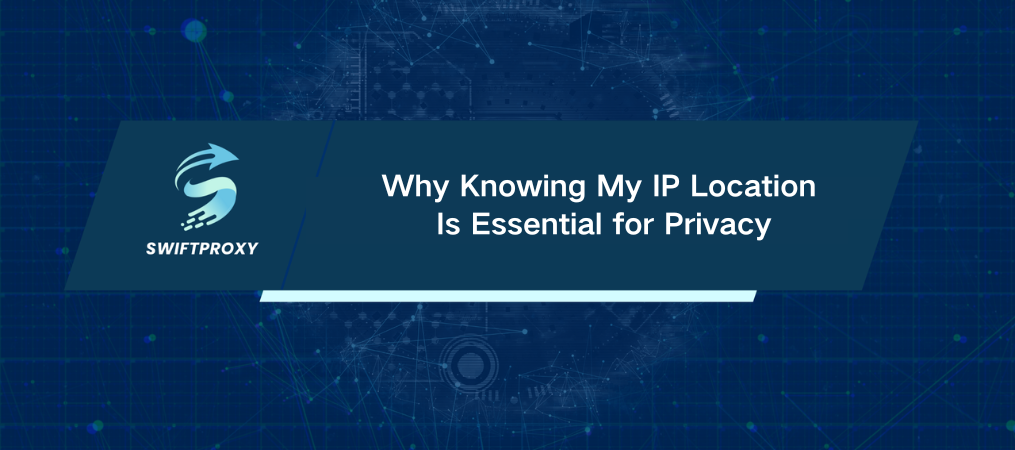Why Knowing My IP Location Is Essential for Privacy

Your IP address isn't just a string of numbers—it's a digital fingerprint that identifies your device on the internet. Whether you're troubleshooting a network issue, securing your personal data, or just curious about where you're connecting from, knowing your "IP location" is crucial. But what exactly is it, and how can you quickly find it? Let's dive in.
What Does an IP Address Do
Think of your IP address as your home address in the virtual world. It’s a unique identifier that allows your device to communicate with others over the internet. Whether it's an IPv4 (like 192.168.1.1) or an IPv6 address (like 2001:0db8:85a3:0000:0000:8a2e:0370:7334), it's this address that allows data to be exchanged between your device and the digital world.
Why It's Important to Know "My IP Location"
The need to find and understand your IP location goes beyond mere curiosity. Here's why it matters:
Remote Access: Need to connect to a computer or device from afar? You'll need the IP address.
Troubleshooting: Struggling with network issues? Knowing your IP can help pinpoint the problem.
Security: Whether you're a developer or a network admin, IP addresses play a critical role in security measures and data protection.
How to Quickly Locate Your IP Address
Finding your IP location is easier than you think! There are a few quick methods you can use:
Try an IP Lookup Tool: The fastest way to check your IP is to visit one of the many online IP lookup tools. Websites like whatismyip.com, ipinfo.io, or iplocation.net will instantly display your IP address—and, in some cases, even pinpoint your geographic location.
Router Settings: If you want to see the IP addresses of all the devices on your local network, you can check your router settings. Just type your router's IP address (usually 192.168.1.1 or 192.168.0.1) into your browser's address bar. After logging in, you'll find a list of connected devices along with their IP addresses.
Differences Between Public and Private IPs
It's important to understand the difference between public and private IP addresses:
Public IP Address: This is the address that identifies your device to the outside world. It’s provided by your Internet Service Provider (ISP) and is unique across the entire internet.
Private IP Address: These addresses are used within your local network (e.g., your home or office) and are assigned by your router. While they're unique within your network, they aren't visible on the broader internet.
IPv4 vs. IPv6: The Future of IP Addresses
You may encounter both IPv4 and IPv6 addresses. Here's a breakdown:
IPv4: This is the most widely used address format. It consists of four sets of numbers, each ranging from 0 to 255 (e.g., 192.168.1.1). The supply of IPv4 addresses is running out, which is where IPv6 comes in.
IPv6: This newer format uses 128-bit addresses and can support an almost unlimited number of unique addresses, allowing for the growing demands of the internet.
Why Understanding Your IP Location Matters for Security
Understanding your IP location is key to protecting your privacy and securing your online activity. Here are some steps to protect your IP:
Use a VPN: A Virtual Private Network (VPN) encrypts your internet connection, making it more difficult for third parties to track your IP or location.
Enable a Firewall: Firewalls protect your device from unauthorized access by monitoring incoming and outgoing traffic.
Update Regularly: Keeping your software and devices updated ensures that security vulnerabilities are patched, making it harder for hackers to exploit them.
Stay Safe Off Public Wi-Fi: Public networks are often unsecured. If you must use them, consider using a VPN to safeguard your data.
IP Address Management for Better Security and Performance
Whether you're managing a home network or a larger office setup, understanding how to allocate IP addresses can enhance both security and network performance.
Static IPs: For devices like printers or servers that require constant access, assigning a static IP ensures they always have the same address.
Dynamic IPs: For most devices, dynamic IPs are sufficient. Your router will automatically assign a new IP address each time a device connects to the network.
The Future of IP Addressing
As the internet grows and more devices come online, particularly with the rise of the Internet of Things (IoT), the need for more IP addresses has skyrocketed. This is where IPv6 becomes essential. The transition to IPv6 ensures that there will be enough addresses for the foreseeable future, and it will continue to play a central role in global connectivity.
In the digital age, understanding and managing your IP address isn't just a techy hobby—it's a vital skill. So next time you need to know "My IP location," you'll be ready to find it fast, understand it fully, and take the right steps to protect your online world.

















































